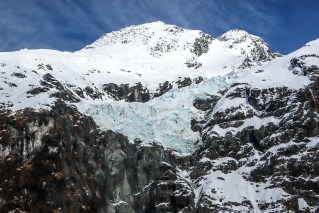Why we’re seeing more animal-to-human viruses, or ‘zoonoses’

Alarm was sparked this week with the news that another ‘new’ virus had been detected in eastern China had made the leap from animals to humans.
The Langya virus, thought to have been transmitted to humans from wild shrews, has infected 35 people since it was first believed to have emerged in 2018.
It has also been found in domestic dogs and goats. As yet, there’s no evidence of human-to-human transmission.
The infected patients say they experienced mild, flu-like symptoms, eerily similar to those of COVID, which is believed to have passed to humans from an exotic animal in a Wuhan wet market.
The emergence of the Langya virus poses the question – why are we seeing so many ‘mystery’ viruses and diseases jump from animals to humans?
Russian roulette
Langya is classified as a ‘zoonoses’ or zoonotic disease, a disease that has passed to humans from animals.
While such diseases typically circulate between animals, humans can sometimes interrupt the cycle of transmission.
Professor Tony Capon, director of the Monash Sustainable Development Institute, attributed much of the rise in zootonic diseases to ecosystem degradation and biodiversity loss.
Professor Capon said there was an emerging pattern of the interconnection between human health and planetary health, increasing the risk of diseases like COVID-19, HIV, Ebola, Zika, Hendra, SARS, MERS and bird flu.
“We’ve left one of the greatest threats to human health to Russian roulette,” he said in a statement.
“When the next pathogen to passed to humans becomes deadly and widespread no one knows, but the threat is increasingly dire.”
Professor Capon said humans were essentially “at war with ourselves, with the environment, and it’s causing pandemics”.
“Better governance, policy reform and education should be an urgent priority to remove the looming threat of the next pandemic,” he said.
The US Centres for Disease Control estimates that three in four newly discovered viruses are due to transmission from animals to humans.
As for their origin, sometimes they aren’t completely new (or novel). In fact, some have existed in animals for thousands of years.
COVID-19, for example, is thought to have circulated among bats long before it infected its first human patient.

The Langya virus is suspected to have transferred to humans from wild shrews. Photo: Getty
Greater interaction
University of Queensland Associate Professor of veterinary science Rowland Cobbold said zoonotic transmission occurred “essentially by accident” and animals had been carrying these disease “probably forever”.
“It’s just a quirk of biology that sometimes these diseases can go across different hosts,” he said.
Although the number of actual viruses may not have increased, our degree of interaction with animals certainly has.
Human-caused climate change is one of the big factors. Rapid deforestation and climate disasters such as floods and bushfires are ripping species from their natural habitats.
In turn, they then relocate elsewhere, often coming into contact with unfamiliar species as they do so.
Another key concern are the notorious wet markets – which are often the sites of illegal wildlife trade.
Wet markets across China were temporarily shut down at the start of the COVID pandemic. Bans were also imposed on selling wild animals as food. The markets have since reopened, despite global criticism.
Professor Cobbold said such “enhanced interaction” with wild animals put humans at risk of contracting zoonoses.
“Any sort of interaction with wildlife, whether we’re capturing them to sell them to wet markets, whether we’re farming them, whether we’re just destroying where they live and forcing them to come to urban areas, it’s all of those things,” he said.

Wet markets are a key area of concern for zoonoses, Professor Cobbold says. Photo: Getty
Much to do
While the spread of Langya virus has so far been minimal, and the symptoms relatively mild, there is still cause for concern.
Professor Cobbold said much more could be done to limit the number of viruses crossing from animals to humans. and along with improving general hygiene, it was crucial to “do as much as possible” to halt or reverse climate change.
Effective zoning for new housing estates was also necessary to ensure humans aren’t encroaching on wildlife, Professor Cobbold said.
“Here in Australia, they’re the main things [we can do].”








